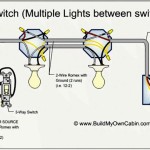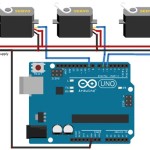A 2 Humbucker Wiring Diagram maps out the electrical connections used in a guitar with two humbucker pickups. It provides a clear layout of how the components are wired together, including the pickups, potentiometers (volume and tone controls), toggle switch, and output jack.
This wiring diagram is essential for understanding the functionality of the guitar’s electronics and enables players to troubleshoot issues, customize their sound, and experiment with different pickup combinations. A key historical development in humbucker wiring was the introduction of split-coil wiring, which allows players to switch between humbucking and single-coil pickup modes, increasing tonal versatility.
In this article, we will delve deeper into the specifics of 2 Humbucker Wiring Diagrams, exploring the various wiring options, their tonal characteristics, and how to optimize the wiring for different guitar setups.
A 2 Humbucker Wiring Diagram is a visual representation of the electrical connections for a guitar with two humbucker pickups. It serves as a blueprint for understanding the functionality of the guitar’s electronics and allows players to customize their sound and troubleshoot issues.
- Components: Pickups, potentiometers, toggle switch, output jack
- Wiring Options: Series, parallel, split-coil
- Tonal Characteristics: Humbucking vs. single-coil, warmth, clarity
- Versatility: Ability to switch between pickup combinations
- Optimization: Tailoring the wiring to the guitar’s specific characteristics
- Troubleshooting: Identifying and resolving electrical issues
- Historical Context: Evolution of humbucker wiring techniques
- DIY Projects: Building or modifying guitars with humbuckers
These aspects are interconnected and essential for understanding the overall functionality and tonal possibilities of a 2 Humbucker Wiring Diagram. For example, the choice of wiring option (series vs. parallel) directly impacts the tonal characteristics of the pickups, while optimization ensures that the wiring is tailored to the specific guitar’s characteristics, such as the type of pickups and the desired sound.
Components
Within the context of a 2 Humbucker Wiring Diagram, the individual components play crucial roles in shaping the sound and functionality of the guitar’s electronics. These components include pickups, potentiometers, toggle switch, and output jack, each serving a specific purpose and contributing to the overall tonal characteristics of the instrument.
- Pickups: The heart of any electric guitar, pickups convert string vibrations into electrical signals. In a 2 Humbucker Wiring Diagram, two humbucker pickups are typically used, providing a wide range of tonal possibilities from warm and thick to bright and articulate.
- Potentiometers: Also known as pots, potentiometers are variable resistors that control the volume and tone of the guitar’s output. In a 2 Humbucker Wiring Diagram, there are typically two volume pots (one for each pickup) and two tone pots (one for each pickup), allowing for precise adjustment of the guitar’s sound.
- Toggle Switch: The toggle switch allows the player to select between the different pickup combinations. In a 2 Humbucker Wiring Diagram, the toggle switch typically has three positions: neck pickup only, both pickups together, and bridge pickup only.
- Output Jack: The output jack is the point where the guitar’s electrical signal exits the instrument and connects to an amplifier or other external device. In a 2 Humbucker Wiring Diagram, the output jack is typically located on the side of the guitar’s body.
The specific choice and arrangement of these components in a 2 Humbucker Wiring Diagram will impact the overall sound and functionality of the guitar. By understanding the role and characteristics of each component, players can customize their wiring to achieve their desired tone and playing style.
Wiring Options
The wiring options available in a 2 Humbucker Wiring Diagram play a crucial role in shaping the guitar’s sound and functionality. By connecting the pickups in different configurations, players can access a wide range of tonal possibilities, from thick and powerful to bright and articulate. The three main wiring options are series, parallel, and split-coil, each with its own distinct characteristics.
-
Series Wiring:
In series wiring, the pickups are connected in a series, with the output of one pickup feeding into the input of the next. This results in a hotter, more powerful sound with increased output and a fuller low end. Series wiring is often used for high-gain applications where a thick, distorted tone is desired.
-
Parallel Wiring:
In parallel wiring, the pickups are connected in parallel, with the outputs of both pickups combined before being sent to the output jack. This results in a brighter, more articulate sound with reduced output and a tighter low end. Parallel wiring is often used for clean and jangly tones, as it retains the clarity and definition of the individual pickups.
-
Split-Coil Wiring:
Split-coil wiring involves wiring the humbuckers so that they operate as single-coil pickups. This is achieved by disconnecting one of the coils in each humbucker, resulting in a brighter, thinner sound that is similar to a traditional single-coil pickup. Split-coil wiring is often used to access a wider range of tones from a single guitar, allowing players to switch between humbucking and single-coil modes.
The choice of wiring option depends on the desired sound and playing style. By experimenting with different wiring configurations, players can find the perfect combination to suit their individual needs.
Tonal Characteristics
In the realm of electric guitar wiring, the tonal characteristics of humbucking and single-coil pickups play a pivotal role in shaping the overall sound and versatility of the instrument. A 2 Humbucker Wiring Diagram offers a comprehensive blueprint for connecting these pickups to modify and enhance their tonal qualities.
-
Output and Power:
Humbuckers generally produce a hotter, more powerful sound than single-coils due to their dual-coil design, resulting in a thicker, fuller tone with increased sustain and gain.
-
Hum-Cancelling:
Humbuckers are known for their ability to cancel out electromagnetic interference, or hum, which is a common problem with single-coil pickups. This hum-cancelling capability makes humbuckers ideal for high-gain applications where noise reduction is crucial.
-
Clarity and Definition:
Single-coil pickups are renowned for their clarity and definition, providing a bright, articulate sound that is well-suited for clean tones and jangly rhythms. They offer a more transparent representation of the guitar’s natural tone, allowing the nuances of the instrument to shine through.
-
Versatility:
A 2 Humbucker Wiring Diagram provides versatility by allowing players to switch between humbucking and single-coil modes through split-coil wiring. This enables guitarists to access a wide range of tonal possibilities from a single instrument, catering to diverse musical genres and playing styles.
Understanding the tonal characteristics of humbucking and single-coil pickups, and how they interact within a 2 Humbucker Wiring Diagram, empowers guitarists to tailor their sound to their specific preferences and musical needs. By experimenting with different wiring configurations and pickup combinations, players can unlock a universe of tonal possibilities, enhancing their creativity and expanding their musical horizons.
Versatility
In the realm of electric guitar wiring, the ability to switch between pickup combinations is a cornerstone of versatility, allowing guitarists to explore a wide range of tonal possibilities from a single instrument. This versatility is made possible by the 2 Humbucker Wiring Diagram, which provides a roadmap for connecting the guitar’s pickups in various configurations to achieve distinct sounds.
The 2 Humbucker Wiring Diagram empowers players to blend the unique characteristics of humbucking and single-coil pickups, unlocking a sonic palette that caters to diverse musical genres and playing styles. For instance, switching to the neck humbucker pickup can produce warm, full-bodied tones ideal for jazz or blues, while engaging the bridge humbucker offers brighter, more aggressive sounds suited for rock or metal. Additionally, split-coil wiring allows players to access single-coil tones from their humbuckers, further expanding their tonal options.
The practical applications of this versatility are immense. Guitarists can adapt their sound to match the demands of specific songs or musical contexts without the need for multiple guitars. Whether performing live or recording in the studio, the ability to switch between pickup combinations on the fly enables players to respond to the musical moment and create dynamic, expressive performances.
In conclusion, the 2 Humbucker Wiring Diagram serves as a gateway to tonal versatility, allowing guitarists to harness the distinct sonic qualities of humbucking and single-coil pickups. By understanding the cause-and-effect relationship between this versatility and the 2 Humbucker Wiring Diagram, players can unlock a world of sonic possibilities, enhancing their creativity and expanding their musical horizons.
Optimization
Within the context of a 2 Humbucker Wiring Diagram, optimization refers to the process of tailoring the wiring to the specific characteristics of the guitar to achieve the desired sound and functionality. This involves carefully selecting and arranging the components, such as pickups, potentiometers, and capacitors, to suit the guitar’s unique tonal qualities and playing style of the musician.
A critical aspect of optimization is matching the pickup’s output and tonal characteristics to the guitar’s body and neck. For instance, a guitar with a bright, resonant body may benefit from humbuckers with a lower output and vintage voicing to avoid overwhelming the natural tone of the instrument. Conversely, a guitar with a darker, less resonant body may require humbuckers with a higher output and more modern voicing to enhance clarity and definition.
The choice of potentiometers and capacitors also plays a significant role in optimization. Different potentiometer values can affect the overall volume and tone response of the guitar, while capacitors can be used to shape the frequency response, altering the brightness or warmth of the sound. By experimenting with different component combinations, players can fine-tune the wiring to achieve the perfect balance between clarity, warmth, and output for their specific guitar and playing style.
In conclusion, optimization is a crucial aspect of 2 Humbucker Wiring Diagrams as it allows guitarists to tailor the wiring to the unique characteristics of their instrument. By carefully selecting and arranging the components, players can unlock the full potential of their guitar’s tone and functionality, creating a personalized playing experience that enhances their musical creativity and expression.
Troubleshooting
In the realm of electric guitar wiring, troubleshooting is a crucial skill for identifying and resolving electrical issues that can affect the sound, functionality, and overall playing experience. A 2 Humbucker Wiring Diagram serves as a valuable tool for troubleshooting, providing a visual representation of the electrical connections within the guitar.
Understanding the cause-and-effect relationship between electrical issues and the 2 Humbucker Wiring Diagram is essential for effective troubleshooting. Common electrical issues may include crackling or intermittent sound, loss of volume or tone, and unwanted noise or hum. By analyzing the wiring diagram and systematically checking the individual components, such as pickups, potentiometers, and solder joints, guitarists can pinpoint the source of the problem.
One practical application of troubleshooting within a 2 Humbucker Wiring Diagram is diagnosing and resolving pickup issues. For instance, if one humbucker is not producing sound, the wiring diagram can guide the guitarist in checking the pickup’s connections, ensuring that it is correctly wired to the volume pot and toggle switch. By systematically eliminating potential causes, guitarists can efficiently identify and resolve electrical issues, restoring their instrument to optimal playing condition.
In conclusion, troubleshooting is an integral part of understanding and maintaining a 2 Humbucker Wiring Diagram. By mastering troubleshooting techniques, guitarists can identify and resolve electrical issues, ensuring that their instrument consistently delivers the desired sound and functionality. This practical knowledge empowers guitarists to maintain their guitars, customize their sound, and troubleshoot any electrical problems that may arise, enhancing their overall playing experience.
Historical Context
The evolution of humbucker wiring techniques is intricately connected to the development and refinement of the 2 Humbucker Wiring Diagram. As guitarists and luthiers experimented with different ways to wire humbucker pickups, new wiring techniques emerged, each with its own unique sonic characteristics and practical applications.
One pivotal moment in the evolution of humbucker wiring was the introduction of split-coil wiring in the 1950s. This technique involves wiring the humbuckers in a way that allows them to operate as single-coil pickups, providing guitarists with access to a wider range of tones from a single instrument. Split-coil wiring became a popular choice for versatile guitarists who wanted to explore both humbucking and single-coil sounds.
The 2 Humbucker Wiring Diagram serves as a roadmap for understanding and implementing these evolving wiring techniques. By providing a visual representation of the electrical connections, the wiring diagram empowers guitarists and luthiers to experiment with different wiring configurations and discover the tonal possibilities that each technique offers.
In contemporary guitar making, the 2 Humbucker Wiring Diagram remains an essential tool for designing and modifying guitars with humbucker pickups. Its ability to accommodate various wiring techniques makes it a versatile resource for guitarists seeking to customize their sound and explore the rich sonic landscape of humbuckers.
Understanding the historical context of humbucker wiring techniques provides guitarists with a deeper appreciation for the evolution of electric guitar design and the ongoing quest for tonal innovation. It also underscores the importance of the 2 Humbucker Wiring Diagram as a tool for unlocking the full potential of humbucker pickups.
DIY Projects
Within the realm of electric guitar wiring, the 2 Humbucker Wiring Diagram provides a crucial foundation for DIY projects involving the building or modification of guitars with humbucker pickups. This diagram serves as a blueprint, guiding enthusiasts through the intricate electrical connections necessary to achieve desired tonal characteristics and functionality. Engaging in these DIY projects offers a rewarding and empowering experience for guitarists seeking to customize their instruments and expand their sonic horizons.
-
Component Selection:
The 2 Humbucker Wiring Diagram empowers guitarists to carefully select and arrange the individual components, such as pickups, potentiometers, and capacitors, based on their tonal preferences and the specific characteristics of their guitar. This level of customization allows for the creation of unique and personalized instruments that cater to the player’s individual needs and musical style.
-
Pickup Combinations:
The wiring diagram provides a framework for experimenting with different pickup combinations, enabling guitarists to explore a wide range of tonal possibilities. By combining humbuckers with single-coil pickups or utilizing split-coil wiring techniques, players can unlock a versatile array of sounds from a single instrument, catering to diverse genres and playing styles.
-
Troubleshooting and Repair:
Armed with the 2 Humbucker Wiring Diagram, DIY enthusiasts can confidently troubleshoot and repair electrical issues that may arise in their guitars. The diagram serves as a visual guide, facilitating the identification of faulty connections, shorts, or other problems, empowering guitarists to maintain and optimize their instruments without relying solely on external assistance.
-
Educational Value:
Embarking on DIY projects centered around the 2 Humbucker Wiring Diagram offers a practical and engaging way to deepen one’s understanding of electric guitar electronics. By actively working with the components and tracing the electrical connections, guitarists gain invaluable hands-on experience, fostering a deeper appreciation for the inner workings of their instruments.
In conclusion, the 2 Humbucker Wiring Diagram serves as an indispensable tool for DIY projects involving the building or modification of guitars with humbucker pickups. It empowers guitarists with the knowledge and guidance to customize their instruments, explore a vast sonic landscape, troubleshoot and repair electrical issues, and gain a profound understanding of electric guitar electronics. These projects provide a rewarding and empowering experience, enabling guitarists to forge a personal connection with their instruments and unlock their full potential as musicians.









Related Posts








